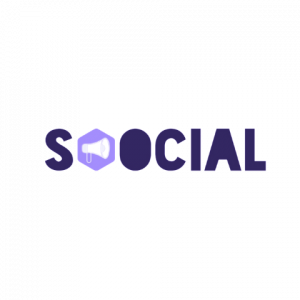In a world where work-life balance is frequently discussed but seldom practiced, Generation Z is spearheading a radical shift against the traditional 9-to-5 work schedule.
This shift isn’t merely a matter of personal preference but a fundamental challenge to longstanding workplace norms.
As the youngest cohort in the workforce, Gen Z’s approach to work is informed by a unique blend of technological immersion, psychological awareness, and a global perspective.
They question the efficacy of rigid schedules that have dominated since the industrial revolution, advocating for a structure that prioritizes human well-being and adapts to individual lifestyles.
Anthropological Insight and Sleep Science

The skepticism towards traditional work hours is not without scientific basis.
Anthropology and sleep science suggest that the conventional nine-to-five workday is at odds with human biology.
Natural human circadian rhythms, which regulate sleep and wakefulness, do not always align with the standard corporate schedule. This misalignment can lead to reduced effectiveness at work and contribute to broader health issues.
Dr. Steven Lockley, a neuroscientist specializing in sleep and circadian rhythms, argues that forcing individuals into a universal work schedule can disrupt natural sleep patterns, leading to decreased cognitive functions and increased stress.
By aligning work hours more closely with natural daylight and individual sleep needs, companies could see improvements in employee health, mood, and productivity.
The Attention Span Dilemma

The changing dynamics of attention span also play a crucial role in reevaluating work structures.
Gloria Mark’s research at the University of California highlights a dramatic shift: where individuals could once focus on a single task for several minutes, now they might struggle to maintain attention for even a minute.
This trend is exacerbated by the digital environment that bombards individuals with constant notifications and multitasking demands.
In her book “Attention Span,” Mark suggests that these changes are not just minor distractions but significant impediments to productivity.
If the average worker is only genuinely productive for less than half of the traditional eight-hour workday, as some studies suggest, this raises a potent question about the efficiency and humanity of sticking to such outdated models.
Employers need to consider more dynamic work patterns that acknowledge human cognitive limits and offer a more realistic alignment with how people naturally concentrate and recharge.
Gen Z at the Forefront of Change

At the vanguard of this workplace revolution are Gen Z leaders and entrepreneurs who are actively implementing these scientific insights into their business models.
This generation values transparency, flexibility, and results over traditional metrics like hours logged at a desk. They champion a culture that emphasizes output and creativity rather than mere presence in the office.
For instance, many young business owners are introducing flexible hours, remote working options, and results-oriented project management, which they argue not only cater to the wellbeing of their employees but also boost productivity by allowing workers to operate at their peak times.
Milly Bannister’s Approach: A Case Study

In Sydney, Australia, Milly Bannister’s organization ALLKND offers a prime example of Gen Z’s innovative approach to management.
Bannister leads a team that works to reduce youth suicide rates—a mission that demands high emotional engagement and intense creativity.
Recognizing the physical and psychological demands of such work, Bannister has rejected the stifling 9-to-5 model in favor of a more adaptive schedule.
Her policy allows employees to take breaks as needed, including what she terms “slump hour” — a no-meeting period following lunch to combat post-meal lethargy.
Furthermore, she embraces practices like allowing her team to take siestas or adjust their work hours to match their productivity peaks.
This flexibility not only supports her team’s mental health but also respects their natural rhythms, leading to more sustainable productivity and job satisfaction.
Jenk Oz and Thred: Redefining Hierarchies

Across continents, 18-year-old Jenk Oz in London offers another compelling case study with his company Thred, a media and consulting firm.
Oz, who founded Thred at just 15, has built a business that resonates deeply with his generation’s preferences for flat hierarchies and collaborative environments.
At Thred, it’s hard to distinguish between senior and junior roles because everyone is encouraged to contribute equally and openly.
Oz emphasizes casual, frequent communication over formal meetings and believes in using his role as a founder more as a facilitator than a traditional boss.
This approach has not only democratized the workplace but also enhanced creative synergies and reduced the intimidation often associated with hierarchical office structures.
Oz’s management style underscores a pivotal Gen Z trait: the rejection of rigid structures in favor of agility and mutual respect.
Cultural and Technological Influences on Gen Z’s Work Preferences

The unique work preferences of Gen Z are deeply rooted in their upbringing in a digital-first world.
This generation has been raised amidst the rapid evolution of technology, with constant access to information and communication tools that previous generations did not experience in their formative years.
As digital natives, Gen Z has developed a proficiency in multitasking across various platforms, fostering a preference for dynamic work environments over static ones.

This comfort with digital technology also translates into a desire for work flexibility—seeing no barrier between being productive in an office setting versus a cafe or their home.
The impact of social media cannot be understated, as it has not only shaped their communication styles but also their expectations of workplace transparency and authenticity.
Social media platforms have exposed them to the immediate impacts of corporate decisions, global issues, and peer discussions, making them more critical of traditional corporate practices and more adamant about ethical business practices and corporate responsibility.
Corporate Disillusionment Fuels Change
:max_bytes(150000):strip_icc()/organizationalstructure-final-5d4f333cdb174faea796402175ff305b.png)
Disillusionment with traditional corporate structures has been further fueled by visible layoffs and publicized corporate mismanagement on social media.
These platforms have lifted the veil on the often-glossed-over realities of corporate life, from the instability of seemingly stable jobs to the personal toll of corporate climbing.
This transparency has led to a skepticism of the long-term viability of traditional career paths championed by previous generations.

Gen Z’s response to this disillusionment is characterized by a pursuit of meaningful work that aligns with their values and offers a tangible work-life balance.
This shift is not just about personal comfort but about a fundamental reevaluation of what it means to be successful professionally.
It’s a shift from ladder-climbing to lattice-moving, where lateral moves and diverse experiences are valued over vertical ascension in a single corporation.
Implications for the Future of Work

As Gen Z continues to enter the workforce and eventually takes on more leadership roles, their preferences will likely necessitate significant changes in how companies operate.
Organizations will need to adapt to these new expectations by offering greater flexibility, more significant opportunities for remote work, and redefined metrics for measuring productivity and success.
Moreover, this generational shift presents an opportunity for businesses to reinvent their corporate cultures to be more inclusive, adaptive, and transparent.
Companies that can successfully integrate these values will likely attract and retain the best talent from this emerging workforce, while those that fail to adapt may find themselves struggling to compete.
Conclusion: Embracing a New Paradigm
The move towards more flexible, humane, and responsive work environments reflects broader societal shifts towards individual well-being and ethical business practices.
For businesses, this isn’t just about accommodating a new generation’s preferences—it’s about moving towards a sustainable model of work that recognizes the human aspects of productivity and creativity.
Embracing this new paradigm involves a significant cultural shift within organizations.
It requires rethinking leadership styles, communication methods, and performance metrics.
It’s about creating environments where flexibility and results are prioritized over process and presence.
As Gen Z’s influence grows, their fresh perspectives and innovative approaches could lead to a more balanced, fulfilling, and productive workplace for everyone.
The future of work may be uncertain, but one thing is clear: it will not look like the past.
Organizations that are willing to learn from and adapt with Gen Z will be better positioned to thrive in this evolving landscape.

